In 2005, one of the major considerations for the inauguration of the Karvan-e-Aman, the Srinagar- Muzaffarabad Bus Service, was the projection of a contrast which was expected to be perceived by the POK travellers between the standard of development on the Pakistan occupied side and that on the Indian side of Kashmir. That contrast has always existed. Yet, in one devastating night on 6/7 Sep 2014 the fury of the Jhelum has virtually equated the two sides of the LoC, laying bare vast stretches of human habitation, destroying livelihoods, habitat, much ancient architecture, and J&K’s famed products; papier-mâché, saffron, carpets, pashmina; just about everything one associates with the Valley’s great culture and tradition. Rightfully almost all the media coverage has concentrated so far on the human tragedy, involving displacement, health and sanitation, relief work, brave heart stories of courageous people, the deep and committed involvement of the Armed Forces, the youth’s energetic heroism and the negatives, involving governmental paralysis. Enough has been written on that, and a sensitive media has rightly ensured that no attempt was made to analyze the security paradigm of J&K and how that has undergone a change, post the flood.
But with 14 terrorists gunned down in Kashmir in September 2014, a reviving and brooding discontent in the flooded streets, much antipathy generated by the deliberate efforts of the separatists, and a vast vacuum created for recruitment of discontented people towards the gun, J&K has the potential of once again turning into a tinder box. This needs some analysis. It is not as if everything is going to happen overnight, but turbulent situations always have their seeds sown by uncontrollable events. The earlier these are recognized, the better it is for the security environment.
The prevailing complexities of a situation emerging from 25 years of terrorism and proxy war have been further complicated by the displacement of people and the trauma brought by the flood. Just prior to the disaster, alarm bells had already been sounded about the reemergence of militant activities, particularly in South Kashmir. In the current situation and its aftermath, the unpredictability factor increases exponentially thus adding trauma manifold. It is perhaps wishful thinking that the excellent rescue efforts by the Army will translate into openly displayed and fulltime goodwill; instead, it may remain a grudging goodwill unless a conscious effort is made to get into the groove of outreach as follow up. In fact, to assess the psyche of the distraught population of Srinagar is currently almost impossible.
Kashmir’s media, which influences opinion very largely, was itself paralyzed and has begun to emerge only now, tentatively. The media is not sure how to tackle the ambiguous situation; whether to play to the Separatist galleries, fringe elements, fence sitters, or the establishment. To be completely above all this is almost impossible, and survival instincts dictate a different course each day. To top it there is an uncertain political environment, a lame duck state government, and insufficient energy to retrieve Kashmir and some areas of Jammu from the disaster they have witnessed.
Traumatized people are considered the last ones to have any scope of change in mindsets; if anything, the failure of early return of livelihood and inability to get back their normal lives is going to keep the population even more vulnerable to negativity. The youth’s displayed dynamism is likely to give it greater self-assurance which while being positive on one hand can also be extremely negative if exploited by anti-national elements.
Is this therefore the time to look at national interests afresh and commence a new narrative? The disaster has witnessed a tremendous outflow of positive energy from the rest of India; aid is flowing in, and social media has seen greater focus on aid rather than the usual discussions on ideological and political differences. While people may be traumatized on the one hand, a large segment of the populace of Srinagar has recognized the efforts of the Army and other agencies (notwithstanding the media’s unintended neglect of the youth) in the rescue efforts. Traumatized people also speak the truth and do not turn their backs on their saviors. The Army has little role inside Srinagar city but it can energize other security forces and build on this relationship which is even more important than its relationship with the rural people. Symbolic acts of goodness must continue through the difficult winter months, including holding medical camps in conjunction with the local medical authorities, conducting small scale recreational events in the suburban areas, ensuring disciplined traffic movement of its convoys, and being available for various winter emergencies.
It is the time to unleash positive political activity, even as the people display their open dislike for political leaders for their collective failure. This is essential in an environment where political activity and outreach has been limited to non-existent. It does not necessarily mean that elections must be held on schedule, but the intervening period must not be occupied by anyone other than mainstream political parties of every hue. The critical psychological space cannot be handed over to separatists and their ilk.
All the above contributes to the security environment because J&K can ill afford bandhs, hartals or stone throwing any more. Whether separatist leaders will risk attempting to do this is unclear, but governance must now concentrate on ensuring that no triggers are provided, and this can be best done by being amply sensitive to the needs of winter for all segments of the population in all three divisions of J&K. The upper reaches of the Jammu division are as vulnerable as the Valley. Power, energy and food requirements must be thought through now; medical equipment and medicines must be stocked in plenty. The Army could be requested to enhance its medical resources this winter so that its assistance can be sought without hesitation. NGOs and volunteer organizations, if coordinated properly and with sensitivity, will be only too happy to have rotational presence through winter. Pediatric care in particular will be much in demand.
While winter tourism would be affected because of the absence of hotel rooms and lesser number of house boats in Srinagar, tour operators need to coordinate with the Department of Tourism to ensure that higher and unaffected areas of Pahalgam and Gulmarg continue to be patronized, as this will have a cascading effect on the economy of Srinagar, and the state will not be erased from the tourist map. The common perception will prevail that the Valley is out of bounds due to floods. Perhaps, this could be an opportunity to be exploited to permit more bed and breakfast facilities in the relatively affluent areas of Srinagar which have not been as badly affected by the Jhelum. For the next summer, we may once again revisit the dream mission of promoting rural tourism through facilities constructed in the villages of the upper ‘karewas’ near the Pir Panjal and the Kangan/Narayan Nag circuit.
Military security is being given the last priority here because the Army has amply demonstrated that it can multi-task itself with ease. Anyone who doubted its capabilities can see how it has simultaneously executed rescue in Srinagar and countered infiltration at the upper reaches of Kupwara, even as half its Headquarters was submerged in Badami Bagh. The Army’s multiple capabilities make it the only agency which can ensure not only full understanding of the challenges but also provide the lead in executing the revival through the difficult period of the first winter after the disaster. The critics of the Army’s presence and its outreach to civilian areas in the countryside will now have to take a back seat. In South Kashmir, which has been ravaged almost as much as Srinagar, and in the upper reaches of the Jammu division, the lead agency for reconstruction must be the Army, and there is nothing political about this; the humanitarian message must go starkly to the people of J&K.
There are enough detractors and exploiters of J&K’s disaster, chief being the ‘Nexus across the LoC and the Separatists’. They too may be sensing the opportunity which appears to be presenting itself. The threat is greater than may be realized now, and it is only coordinated and pro-active actions by India’s strategic thinkers, and execution by various agencies which could actually convert the Nexus’ opportunity into our gain. In all this, the people of J&K can emerge once again as the center of gravity just like they always have.
The underlying message in this piece is clear; there is a clear opportunity which has come the Nation’s way; we have the most dynamic political leadership in India in years; Pakistan has never been in the state of paralysis that it currently is; the separatists have also taken a psychological beating. We just need to set aside all other agenda and look at national interest afresh. Mainstreaming J&K more meaningfully may never happen as easily as it can now.
(The writer is a former General Officer Commanding of the Srinagar based 15 Corps and the author of the Hearts Doctrine; he is a Visiting Fellow of the Vivekananda International Foundation besides being active on the India-Pakistan Track 2 circuit)
Published Date: 6thOctober 2014, Image source: http://www.bbc.com
(Disclaimer: The views and opinions expressed in this article are those of the author and do not necessarily reflect the official policy or position of the Vivekananda International Foundation)

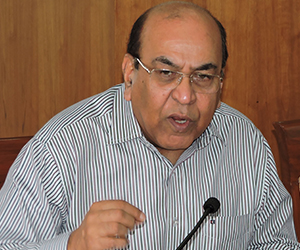
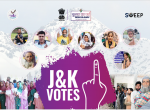
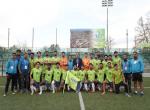
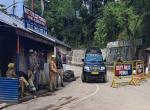
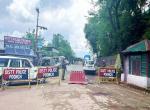
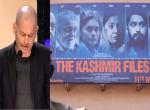
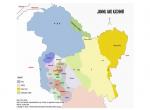
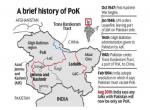
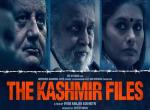
Post new comment